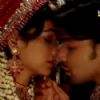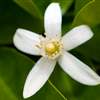DASHA MAHAVIDYAS AND THE VEDAS
http://satyavidya.com/dashmahavidya.htm
As in later times there were forms of Durga, so in Vedic times, the goddess Durga was Indrani or Shachi. Shachedrani is hence the Durga-form, and other forms derive from her, as per the Rig Vedic forms of Indra.
Tara is the spouse of Vedic Brihaspati, a form of Indra (Mahakala) as Lord of Speech. Speech is also Fire in the Vedas, and in this form Brihaspati is called Narashamsa.
Indra has also forms of wisdom (RV.VII.32.26), that relate to Brihaspati.
The idea of the Goddess as Fire as the Saviouress is shown in the famed mantra I.99.1, which starts Durhasgukta, and also the Agni-taraka mantra, in which he is invoked as Saviour and Preserver as Mother (Tara) and Father (Akshobhya, Brihaspati) forms - by the son of Tara and Brihaspati - Rishi Bharadvaja (RV.VI.1.5).
Dhumavati derives from Danu the mother of Indra (male form of Kali) and the Maruts (male forms of Mahavidyas) in the Vedas. She is also widow-goddess like Dhumavati. She is the male form of Svarbhanu the demon of darkness that eats or consumes the Sun-God, which later becomes Shiva, consumed by Dhumavati. The Goddess Aditi in her Danu aspect relates to Dhumavati, as Aditi means both 'Eater' and 'Primal Reality'. She is also Goddess Nirriti and Arayi, crone-goddesses of destruction and misfortune (alakshmi).
It is interesting the dark form of Rudra-Shiva beyond death, Mahakala as Shani (saturn), the dark planet and higher form of death (mrityu) as Mahamrityunjaya, has the same Seer Pippalada, as Dhumavati. Shani is also the cosmic-eater like Svarbhanu.
Matangi mahavidya is Saraswati as Vritraghni (femanine slayer of Vritra, RV.VII.96.1), and Goddess of Speech. As Indra slays Vritra and becomes the outcaste, Matangi is this femanine Saraswati-outcaste form (as Vritraghni) form he finds in degradation (RV.VI.18.13), where even the gods abandon him.
Kali is the Supreme Mahavidya, and is the Vedic Goddess Shachi (RV.X.159) or Indrani, the female form of Indra the supreme Vedic divinity (RV.VI.30.4), as the Supreme Goddess. It is Shachi, the spouse of Indra who is his power to overcome evil forces in the Rig Veda (RV.VI.31.4). The Maruts themselves are his weapons, and can be translated as Shaktis.
Hence,like Indra, she rules the Maruts or Rudras (male forms of the mahavidyas), and relates to Prana, like Indra. She is Indra in his Ugra (wrathful) aspects, as storm.
As mother of the Maruts, she is called Prishni (spotted), being the night sky, and her black body garlanded with stars that later become skulls. She is hence Goddess Ratri (night) with her dark limbs (RV.I.62.8).
Along with Sundari or Lalita she is thus a Supreme-form of the Goddess. Interestingly, a verse from Rig Veda extols both Indra (Mahakala) and Soma (Sundara) as Supreme demon-slaying forms of Shiva. This shows the supremecy of Prana and the Soma-region being personified as Goddesses or divine principles.
Baglamukhi means to bridle or control. Baglamukhi is the Vedic Goddess Varunani, the spouse of Varuna or Yama, god of death, who holds the noose that binds the soul or Pranas (breaths of life). Like Yama (meaning Controller, of Prana, thus deity of Pranayama) or Varuna, she thus relates to the practice of controlling Prana.
Varuna represents the Cosmic Law (rta) in the Vedas, and it is hence his chastising noose that binds the tongue and prana thus later becomes the weapon of paralysation. The tongue is the main enemy to be bound, since harmful speech goes hand-in-hand with going against the Cosmic Law.
She is golden in form and hence is also a form of the Sun in it's blinding and thus paralysing aspect (wrathful or war-like form of Bhuvaneshvari). She is hence Indra's thunderbolt in it's golden form, where Indra is the Sun in his golden, but wrathful form (RV.X.96.3). As the Vajra, she is his actual shakti here.
Thus, she is Indra or Indrani as Vritraghni, yet again, the Goddess form of Indra in his paralysing aspect. Moreover, as the Vajra - the wepaon that slices all of Vritra's limbs off (RV.I.32.7), thus rendering him paralysed, reminding one of the law of Mitravaruna (Sun-form of Varuna, being Golden Varuna or Bagla),RV.X.89.8.
Bhairavi Bhairavi is Rudra's spouse or Prishni as the Firey-form and wrathful form of Speech, known as Vak or Saraswati. She is the ego-destroying Vritraghni, in her Ghora (terrifying) aspect, she is Bhairavi - with her path of gold or inner illumination - being Kundalini shakti (RV.VI.68.7). Rudra is the lord of wrath in his form as Lord of Yajna and Chants or speech (RV.I.43.4-5). It thus relates to Bhairavi, the wrathful or firey form of speech again. Yet again we have the idea of the illuminating force of Kundalini as Gold.
Rudra here as medhapati, lord of sacrifice or offering - also represents the offering of the Divine Ego to the Supreme. Bhairavi is the shakti aspect that makes this manifest. Bhairavi is also Indra in his Ghora (terrifying) aspect.
Kamla is the form of Indra's spouse Indrani as the goddess Ushas,the youthful goddess of Light and also Wealth. She is Indra the wealth-giver (ie.RV.VIII.1.6,X.42.9, RV.X.47.5). She is Rajeshwari, the femanine form of Indra as the wealth-giving Rajendra or Lord of the Gods and Maghavan (RV.I.174.1).
Lalita is the goddess Sundari, shakti of Sundara - the Moon, Divine Seer and Youth who personifies the Sahasrarapadma Chakra - the realm from which Nirguna Brahman comes and from which the Trinity and Three Realms are born. She is thus femanine form of Vedic Soma, the youthful god of bliss, wisdom and who personifies the sdahasrarapadma chakra and is the divine lover.
Lalita as this transcendental realm is the Mother of the Gods Indra, Brahma (Surya), Vishnu, Shiva (Agni), Maheshvara and the three regions as Soma is (RV.IX.96.5,RV..IX.87.2-3)., as deity of Sahasrarapadma Chakra. She is the transcendental form of the Goddess as Bliss. She is the higher form of Kamla or Rajeshwari, as Rajarajeshwari, "The Supreme Rajeshwari", Soma being the Supreme Rajeshwar or Indra as Rajarajeshwar.
Along with Kali or Indrani, she is thus a Supreme-form of the Goddess. Interestingly, a verse from Rig Veda extols both Indra (Mahakala) and Soma (Sundara) as Supreme demon-slaying forms of Shiva.
Bhuvaneshvari is Indrani as Ishani, the form of Indra as Ishana, who is later Shivasurya or the Sun. Indra as the Sun in the Rig Veda is thus Bhuvaneshvara. She is Aditi as the unbounded, who pervades all of nature under the form of Maya (RV.I.89.10). Through her knowledge, we thus come to understand the divine sun that pervades all things.
Chinnamasta beheads herself in order to feed her two attendant Shaktis, Dakini and Varnini, who are the Vedic Ashwins
(RV.VII.67.5) , who are taught the science of Soma (being amrita or liquid-beverage that is the mind or manas in Vedic thought) or Honey (madhu, also being food) - thus "feed" by the Rishi Dadhyach (RV.I.119.9). Dadhyach personifies Indra's Vajra or thunderbolt, whose head is cutt off in order to reveal the Soma (RV.I.134.13-15). As with the grace of Chinnamasta, Dadhyach thus also grants the amrita and is lord of Soma (RV.IX.108.3), taking us to Lalita Tripurasundari.
She may also be related as the spouse of the be-headed Vishvarupa, the false Guru of the gods (and brother-form of Vritra or Svarbhanu as Ketu, the trunkless form of Vritra) whose three heads represent her three streams of bloods. Interestingly, the Brihadaranyaka relates Vishvarupa as a disciple of the Ashwins, the purush-forms of the goddesses Dakini and Varnini who wait upon Chinnamasta.
In truth, she is the headless form of Kali. Indra in the Rig Veda who kills his father Vritra, beheads himself. Brihadaranyaka-upanishad (I.5.6-7) states Father = the Mind (Head or Ego). Indra who slays father Vritra, thus beheads himself. Chinnamasta is thus another form of Vritraghni (femanine slayer of Vritra) Saraswati like Matangi, rendered here as Indra beheading himself, or as spouse of Dadhyak.
Edited by mnx12 - 12 years ago





















comment:
p_commentcount